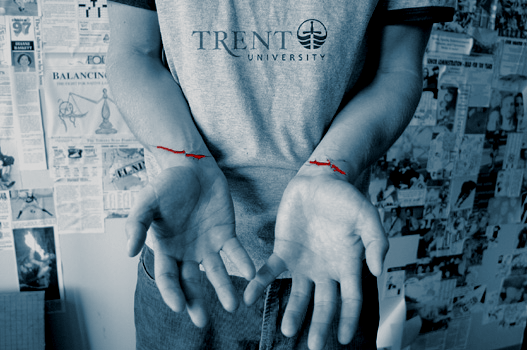 failed suicide attempt failed suicide attempt
Failed suicide attempts comprise a large portion of
suicide attempts. Some are regarded as not true attempts at all, but rather
parasuicide. The usual attempt may be a wish to affect another person by the
behavior. Consequently, it occurs in a social context and may represent a
request for help. The distress is misdirected: The behavior is an act of
desperation. Some suicide methods have higher rates of failure than others;
e.g. wrist-slashing has a much higher failure rate than use of firearms, which
has only a 10% failure rate. 75% of all suicide attempts are by the use of
drugs, a method that is often thwarted by using non-lethal drugs or non-lethal
dosages. These people are found alive 97% of the time. There is an often-told
but probably-apocryphal story of a man who failed to kill himself by hanging, poisoning, drowning, self-immolation and gunshot wound simultaneously. About
one-third of people who attempt suicide will repeat the attempt within 1 year,
and about 10% of those who threaten or attempt suicide eventually do kill
themselves.
Failed suicide attempts may lead to permanent injury and disfigurement, as when
A. .J. Reed attempted to kill himself with a shotgun and destroyed most of his
face. 300,000 (or more) Americans a year survive a suicide attempt. A
 majority have injuries minor enough to need no more than emergency room
treatment. However, about 116,000 are hospitalized, of whom 110,000 are
eventually discharged alive. Their average hospital stay is 10 days; the average
cost is $15,000. Seventeen percent, some 19,000, of these people are permanently
disabled, restricted in their ability to work, each year, at a cost of $127,000
per person. majority have injuries minor enough to need no more than emergency room
treatment. However, about 116,000 are hospitalized, of whom 110,000 are
eventually discharged alive. Their average hospital stay is 10 days; the average
cost is $15,000. Seventeen percent, some 19,000, of these people are permanently
disabled, restricted in their ability to work, each year, at a cost of $127,000
per person.
On the other hand, a study has found that after people attempt suicide and fail,
their incomes increase by an average of 20.6 percent compared to peers who
seriously contemplate suicide but never make an attempt. In fact, the more
serious the attempt, the larger the boost�"hard-suicide" attempts, in which luck
is the only reason the attempts fail, are associated with a 36.3 percent
increase in income.
|

